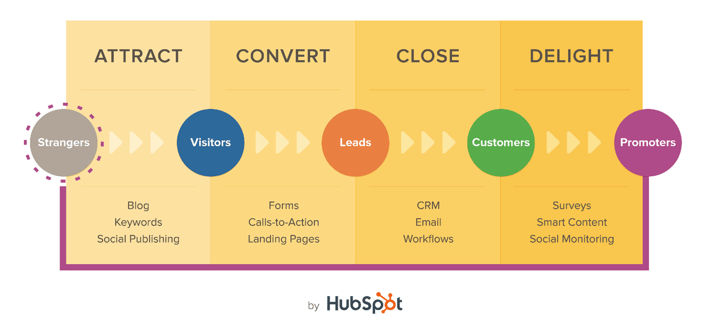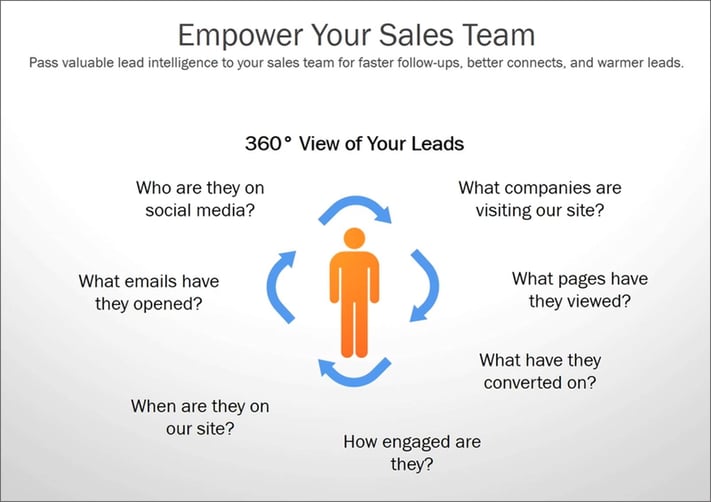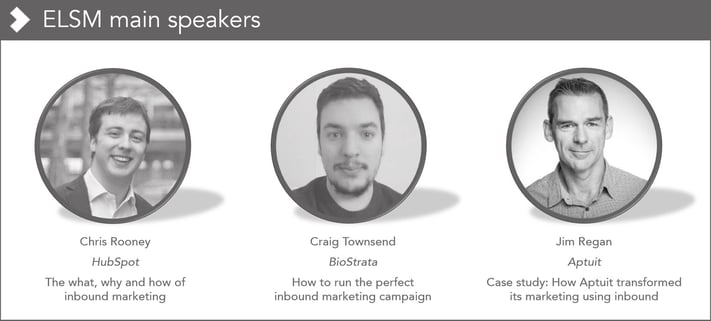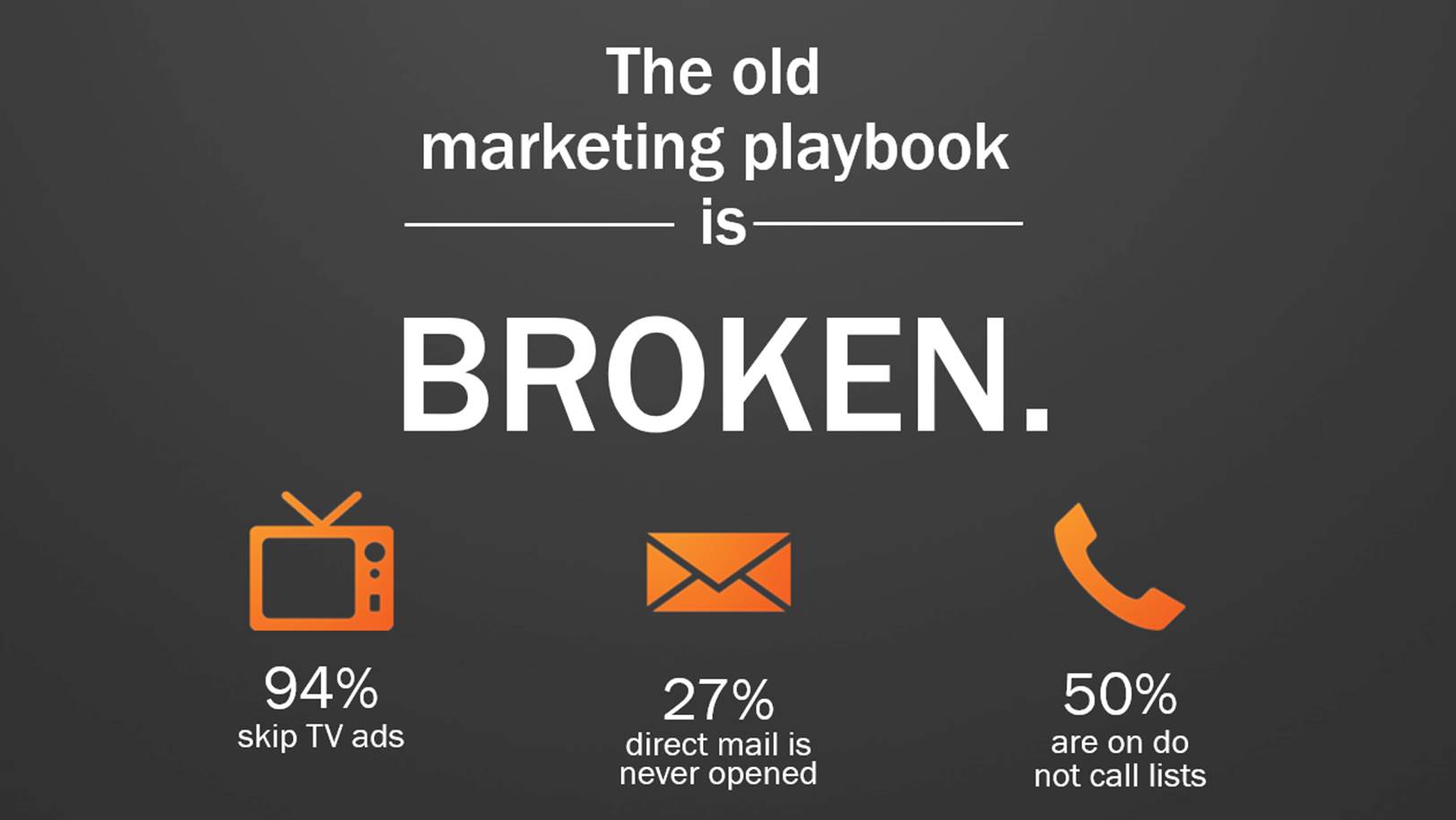“The old marketing playbook is broken,” claimed Chris Rooney from HubSpot, while speaking at the recent Evolution of Life Science Marketing (ELSM) event in Cambridge, UK.
We agree (and provide more insights into why in this blog and video on the inconvenient truths of modern life science marketing). The interruptive marketing of yesterday is failing in today’s customer-centric, information-rich world. To survive, it is evolving into a content-driven, inbound marketing approach, which was the focus of Chris’s talk at the ELSM event.
In his presentation, Chris introduced the concept of life science inbound marketing, provided some expert tips on how to approach it, and explored the many benefits it can bring to companies looking to boost lead generation and sales conversions. His talk is summarized here, but you can also learn more by watching the full video of his presentation below, which forms part of our educational webinar series on how to execute inbound marketing for life science companies.
Why choose inbound marketing?
Instead of using a traditional, marketer-centric approach, inbound marketing puts the needs and interests of your prospects first, by providing them with compelling and valuable content in return for opportunities to engage with them and nurture them into potential customers. As Chris explains, “It’s marketing with a magnet, not a sledgehammer.”
By appealing to today’s autonomous, information-hungry consumer, inbound marketing is not only surviving, but thriving in the life sciences, where it can drive significant results when it comes to lead and revenue generation. It can also help you to outperform competitors relying solely on traditional marketing tactics (but only if it’s done properly; watch this other ELSM talk from Craig Townsend to find out how to build and execute the perfect inbound campaign).
Inbound marketing and HubSpot
As part of the inbound marketing revolution, HubSpot has reformed the traditional marketing funnel to develop its own methodology, which has four stages: Attract, Convert, Close, and Delight. In Chris’s talk above, he explored how, at each stage, different types of content have the power to captivate your audience to optimize lead generation and nurturing.

A key benefit of applying this approach to your marketing strategy is what Chris calls a “360° view of your leads,” in which intelligence about prospective customers generated from both your marketing and sales activities can empower your sales team to have more informed (and effective) sales conversations. For example, the HubSpot contact record tool allows sales representatives to see what content prospective customers are downloading, and then act upon this to start building rapport with them by jumping straight to the topics that interest them the most.

Inbound life science marketing and sales: top tips
If you’re struggling to work out how to implement your life science inbound marketing and sales process, or are looking to improve your current strategy, Chris gave some handy tips in his talk that could help to transform your life science marketing and sales activities.
For example, any valuable content offered to prospective customers should ideally be gated behind a contact form, so when they access the content, you can collect their contact details in return and follow up with them. Connecting sales and marketing activities using a shared CRM is also recommended, so you can track marketing activity right through to sales generation (and can also use this info to justify spend on marketing, and inform future strategies). Sharing your content with your sales teams will also enable them to give these items directly to customers, as another way to build trust that can be leveraged to close sales.
Chris’s other handy tips on perfecting your inbound marketing and sales strategy can be found in the full version of his talk above.
Getting started with inbound marketing
There are some potentially daunting barriers that need to be overcome before getting started with inbound, such as the initial investment required and allocating resources to it in the long-term. In his talk, Chris suggested some simple practices that can minimize these barriers, and even knock them down altogether!
For example, starting with your existing metrics and customer databases can be a quick and cost-effective way of generating some useful intelligence and quick wins. It is also important to understand which elements of your inbound marketing activities are generating return on investment to find out what’s working and what’s not. In his talk, Chris went into detail about which metrics are best to look at within the three different elements of your marketing activities: website/blog traffic, leads, and customers.
Lastly, defining your short-, medium- and long-term business goals is also valuable. “The work you do now is going to provide you with benefits over the next 5 to 10 years, and beyond,” says Chris. Effectively, your inbound content is an asset that will live on your site and be accessible to new web visitors until you remove it, meaning it can continue to engage prospects and generate leads long after your initial campaign has ended.
Making inbound marketing work for you
Using software tools like HubSpot and following expert advice can facilitate your ability to set up, track and optimize your inbound marketing activities to improve lead generation and sales conversions. But, Chris warns, “[HubSpot] is a bit like a gym membership: you need to be able to invest the time in it, because while it’s a great tool, it’s not going to do the work for you.”
Find out how to make inbound marketing work for you by accessing Chris Rooney’s full talk at the Evolution of Life Science Marketing event, or watch the other ELSM talks by Paul Avery, Craig Townsend (BioStrata) and Jim Regan (Aptuit) for more info.






